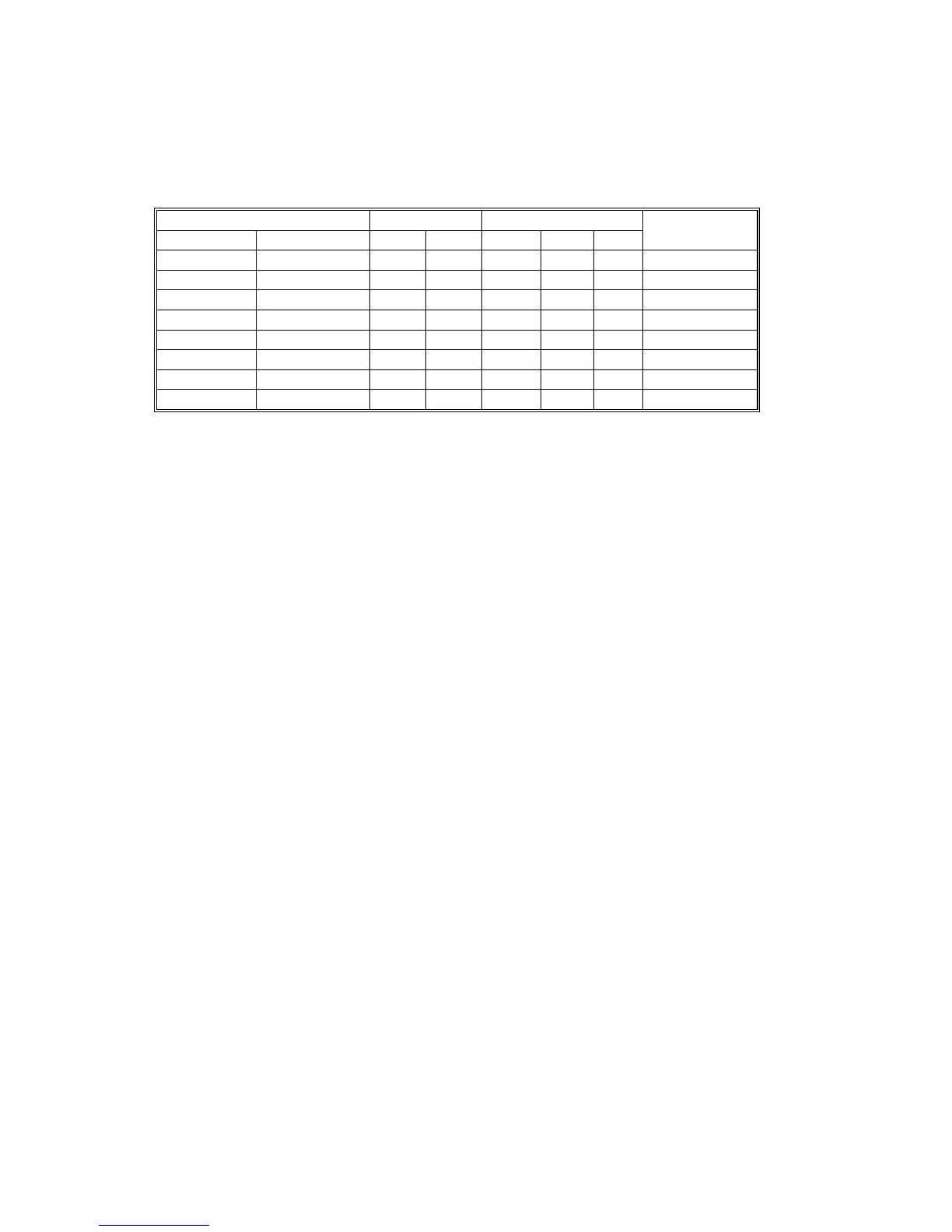SCANNING 15 February 2006
6-28
The table below lists the sensor output for each paper size.
If an original is on the exposure glass, you can check the sensor output by using
SP4301 (APS Sensor Output Display).
Original Size APS Length APS Width
A4/A3 LT/DLT 5 4 1 2 3
SP4301
Display
A3 11" x 17" 1 1 1 1 1 000 11111
B4 — 0 1 1 1 0 000 01110
A4 SEF 81/2" x 11" 0 0 1 1 1 000 00111
A4 LEF 11" x 81/2" 0 1 1 0 0 000 01100
B5 SEF — 0 0 1 1 0 000 00110
B5 LEF — 0 1 0 0 0 000 01000
A5 SEF 51/2" x 81/2" 0 0 1 0 0 000 00100
A5 LEF 81/2" x 51/2" 0 0 0 0 0 000 00000
1: High (Paper Present), 0: Low (No Paper)
If the original is small (such as A5-LEF), all sensors remain off and the machine
indicates that the original size cannot be detected. However, you can force the
machine to detect A5/HLT in this situation by adjusting SP4303 (APS A5 Size
Detection).
Detection Timing
When the power is on, the APS sensors are always active, but the CPU checks
their signals only after the platen is lowered.
Book Mode
In the Book mode (when the ADF is open), the CPU checks the APS sensors and
determines the original size after Start ! is pressed.
ADF Mode
The CPU checks the APS sensors after the platen is lowered.
By-pass Mode
The APS sensors are ignored when copy paper is fed from the by-pass tray, but
the by-pass tray can handle a variety of sizes and orientations. To accomplish this:
• The machine always assumes short-edge feed for paper on the by-pass tray.
• Width is measured by a sensor inside the by-pass tray.
• The bypass tray cannot measure length, so the registration sensor determines
the length of the paper using clock pulses.
The copy time for the first sheet is slower, because the entire exposure glass area
(or width for the CIS) is scanned. However, when the size of the first sheet has
been detected, scanning is at normal speed for the remaining sheets. (!
Handling Paper> Paper Feed> Paper Size Detection> By-pass Size Detection)

